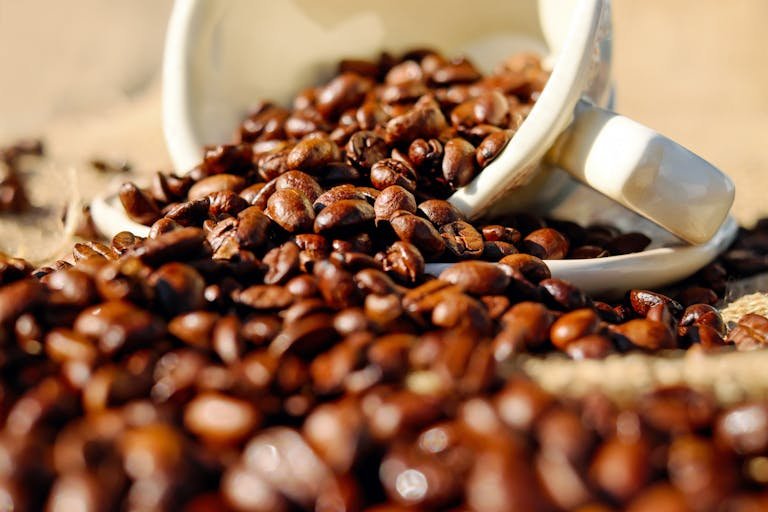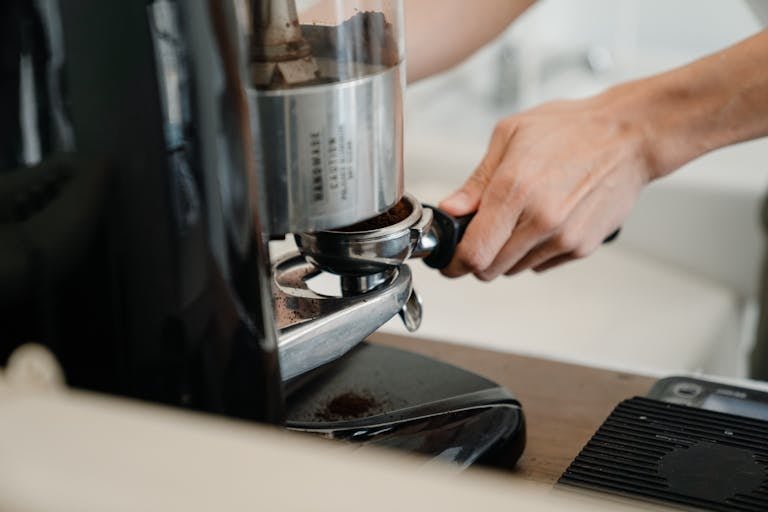Espresso is not just a coffee; it’s a ritual, a craft, and for many, a daily necessity. The key to a perfect cup of espresso lies in the roast level of the coffee beans. Whether you’re a coffee enthusiast, a home barista, or a lover of specialty coffee, understanding the best roast for espresso can elevate your daily brew from good to extraordinary. In this guide, I’ll take you on an in-depth exploration of the various roast levels, how they impact flavor and extraction, and provide actionable tips to help you find your ideal espresso roast.
The Magic of Coffee Beans and Roasting
Coffee beans undergo a fascinating transformation that begins at the farm and ends in your cup. The roasting process is a crucial stage that unlocks the beans’ full potential. During roasting, beans are exposed to heat, causing chemical reactions that develop their flavor, aroma, body, and acidity. The roast level—whether light, medium, or dark—plays a significant role in defining these characteristics.
Light Roasts: Exploring the Bright and the Bold
Light roasts are celebrated for their vibrant acidity and complex flavor profiles. These beans retain much of their original character and are often associated with fruity and floral notes. For example, an Ethiopian light roast might exhibit a bright, lemony zest, while a Panamanian variety could reveal delicate jasmine undertones. Light roasts are perfect for those who appreciate a lively and nuanced espresso experience.
Origin-Based Flavor Profiles
The diversity of coffee flavors is astounding, and light roasts showcase this beautifully. Beans from different regions bring unique taste experiences to your cup. An Ethiopian Yirgacheffe might offer citrus and bergamot notes, whereas a Kenyan AA could surprise you with blackcurrant and grapefruit. Understanding these origin-based profiles helps you appreciate the spectrum of flavors in light roasts.
Recognizing and Appreciating These Flavors
To truly savor a light roast, take note of its brightness and complexity. Sip slowly and allow the flavors to unfold on your palate. Experiment with different origins and find the ones that resonate with your taste preferences. Remember, light roasts are best enjoyed fresh, as their delicate flavors can fade quickly.
Medium Roasts: The Balancing Act of Nuttiness and Sweetness
Medium roasts strike a harmonious balance between the bright acidity of light roasts and the rich, deep flavors of dark roasts. These beans often feature nutty, caramel, and sometimes fruity notes. A Colombian medium roast might offer a smooth caramel finish, while a Costa Rican variety could present hints of almond and toffee. This roast level is ideal for those seeking a well-rounded and approachable espresso.
Detailed Descriptions and Origins
Medium roasts are incredibly versatile, offering a wide range of flavor profiles. Colombian beans are known for their well-balanced sweetness and mild acidity, making them a favorite for many coffee lovers. Meanwhile, Costa Rican beans might deliver a buttery texture with notes of dark chocolate and citrus. Exploring these origins enhances your appreciation for the subtleties of medium roasts.
How to Savor Medium Roasts
When enjoying a medium roast espresso, look for a balance of flavors and a smooth mouthfeel. Notice how the sweetness complements the acidity, creating a pleasant and satisfying cup. Medium roasts are forgiving and versatile, making them a great starting point for home baristas.
Dark Roasts: The Rich and Complex Experience
Dark roasts are known for their bold, smoky, and rich flavors. These beans undergo longer roasting times, which brings out deeper, more intense notes. An Indonesian dark roast might offer robust chocolate and spice flavors, while a Brazilian variety could present a rich, full-bodied experience with hints of dark cocoa. Dark roasts are perfect for those who enjoy a strong and hearty espresso.
Read Also: Long Black Coffee: The Bold Brew You Need to Know
Understanding the Boldness
Dark roasts have a reputation for being bitter, but when done right, they can offer a delightful complexity. The extended roasting process caramelizes the sugars in the beans, resulting in chocolatey, nutty, and sometimes smoky flavors. Recognizing these characteristics helps you appreciate the depth and richness of dark roasts.
Tasting and Pairing
To fully enjoy a dark roast, pay attention to its body and intensity. Sip slowly and savor the layers of flavor. Pairing dark roasts with rich desserts or savory snacks can enhance the experience. Think of a dark roast espresso alongside a piece of dark chocolate or a slice of cheesecake for a truly indulgent treat.
The Science of Espresso Extraction
Espresso extraction is an art and a science, and the roast level of the beans plays a pivotal role. Different roast levels affect the density, solubility, and extraction rates of the coffee. Understanding these factors helps you achieve the perfect shot every time.
How Roast Level Affects Extraction
Light roasts are less soluble and denser, requiring a finer grind and longer extraction time to bring out their flavors. Medium roasts are more forgiving, with balanced solubility and density. Dark roasts, being more porous, extract quickly and can handle a coarser grind. Adjusting your grind size and extraction time based on the roast level is crucial for optimal results.
Ideal Extraction Parameters
For light roasts, aim for a water temperature between 200-205°F and an extraction time of 25-30 seconds. Medium roasts perform well at 195-200°F with a 20-25 second extraction time. Dark roasts thrive at 190-195°F with a shorter extraction time of 18-22 seconds. These parameters help highlight the best qualities of each roast level.
Troubleshooting Espresso Shots
Common issues like sourness or bitterness can often be traced back to extraction problems. If your light roast espresso tastes sour, try increasing the extraction time or adjusting the grind finer. For a bitter dark roast, consider shortening the extraction time or using a coarser grind. Experimentation and fine-tuning are key to mastering espresso extraction.
Choosing the Best Roast for Your Palate and Equipment
Selecting the right roast level for your espresso involves understanding your personal preferences and the capabilities of your brewing equipment. Here are some practical tips to guide you.
Identifying Personal Preferences
Start by tasting different roast levels and noting which flavors you enjoy most. Do you prefer the bright acidity of light roasts, the balanced sweetness of medium roasts, or the bold richness of dark roasts? Understanding your taste preferences helps narrow down your options.
Experimenting with Different Roasts
Don’t be afraid to try beans from various origins and roast levels. Experimenting allows you to discover new flavors and refine your palate. Keep a coffee journal to record your observations and preferences, making it easier to find your favorite roasts.
Matching Roast Levels with Equipment
Certain espresso machines and grinders perform better with specific roast levels. Lighter roasts may require more precise equipment to achieve the right extraction, while dark roasts can be more forgiving. Understanding your equipment’s strengths and limitations helps you choose the best roast for your setup.
Enhancing Your Coffee Experience with Pairings
Pairing coffee with food can elevate your tasting experience, highlighting the unique flavors of both. Here are some suggestions for pairing different roast levels with complementary foods.
Light Roasts and Citrus Pastries
The bright acidity of light roasts pairs beautifully with citrusy pastries. Try an Ethiopian light roast with a lemon scone or an orange muffin for a refreshing morning treat. The fruity notes in the coffee complement the citrus flavors, creating a harmonious combination.
Medium Roasts and Nutty Cheeses
Medium roasts, with their balanced sweetness and nuttiness, go well with nutty cheeses. A Colombian medium roast paired with Gouda or Manchego cheese makes for a delightful afternoon snack. The caramel and almond notes in the coffee enhance the flavors of the cheese.
Dark Roasts and Chocolate Desserts
Dark roasts are perfect for pairing with rich, chocolatey desserts. Enjoy an Indonesian dark roast alongside a piece of dark chocolate or a slice of chocolate cake for an indulgent after-dinner treat. The bold, smoky flavors of the coffee complement the richness of the chocolate.
Ethical and Sustainable Sourcing
Choosing ethically sourced coffee beans not only supports sustainable practices but also ensures a better quality cup. Here’s why ethical sourcing matters and how to identify responsible roasters.
Importance of Ethically Sourced Coffee
Ethically sourced coffee ensures fair wages for farmers and promotes environmentally friendly practices. By choosing coffee from ethical roasters, you support sustainable agriculture and contribute to the welfare of coffee-growing communities.
Highlighting Ethical Roasters
Look for certifications like Fair Trade, Rainforest Alliance, or Direct Trade when selecting coffee. Brands like Counter Culture Coffee, Stumptown Coffee, and Blue Bottle Coffee are known for their commitment to ethical sourcing. Supporting these brands ensures you’re making a positive impact with your coffee choices.
Environmental Impact of Roasting
Roasting coffee beans has an environmental footprint, but some roasters are taking steps to minimize their impact. Look for roasters that use energy-efficient methods, offset their carbon emissions, and prioritize sustainable packaging. Making informed choices helps reduce the environmental impact of your coffee consumption.
Coffee and Health Benefits
Coffee is not just a delicious beverage; it also offers several health benefits. Here’s how different roast levels can impact your health and well-being.
Caffeine Content in Different Roasts
Contrary to popular belief, light roasts typically have slightly higher caffeine content than dark roasts. The roasting process reduces the caffeine levels, so if you’re looking for a caffeine boost, light roasts might be your best bet. However, the difference is minimal, and all roast levels provide a good dose of caffeine.
Antioxidants and Health Benefits
Coffee is rich in antioxidants, which can help protect your cells from damage. Light roasts tend to have more antioxidants than dark roasts, as the roasting process reduces the antioxidant content. Regular coffee consumption has been linked to various health benefits, including improved mental alertness, reduced risk of certain diseases, and enhanced physical performance.
Moderation is Key
While coffee offers health benefits, it’s important to consume it in moderation. Excessive caffeine intake can lead to negative side effects such as insomnia, anxiety, and digestive issues. Aim for 3-4 cups per day to enjoy the benefits without overdoing it.
Read Also: Deciphering Chai Latte: Tea, Coffee, or Both?
Closing Words
Finding the best roast for espresso is a personal journey that involves understanding your taste preferences, experimenting with different beans, and adjusting your brewing techniques. Whether you prefer the bright acidity of light roasts, the balanced sweetness of medium roasts, or the bold richness of dark roasts, there’s a perfect roast out there for you.
By exploring the diverse world of coffee flavors, understanding the science of espresso extraction, and making ethical choices, you can elevate your coffee experience and enjoy a perfect cup every time. Remember, the key to great espresso lies in the details, so take the time to savor and appreciate each sip.
Ready to start your espresso adventure? Share your favorite roast levels and coffee experiences in the comments below!



